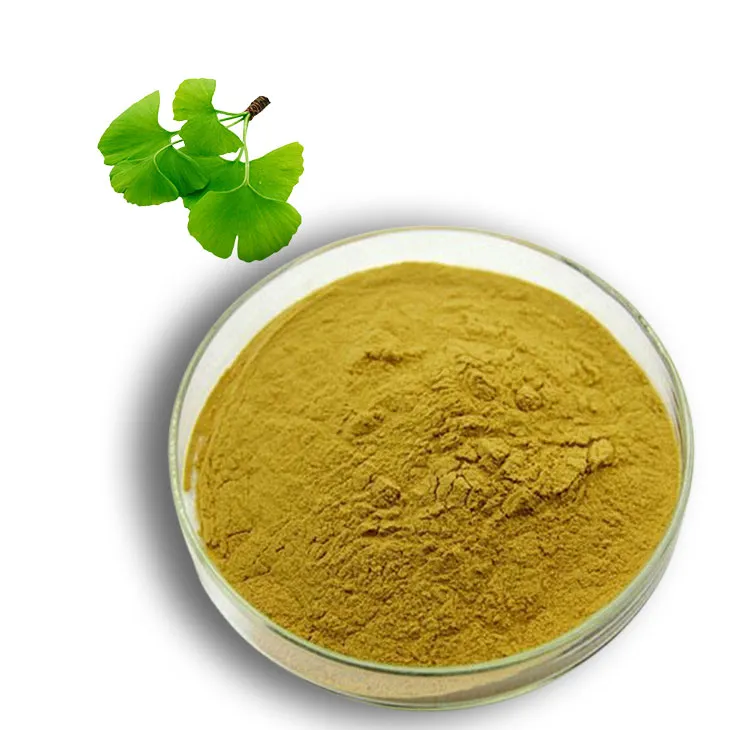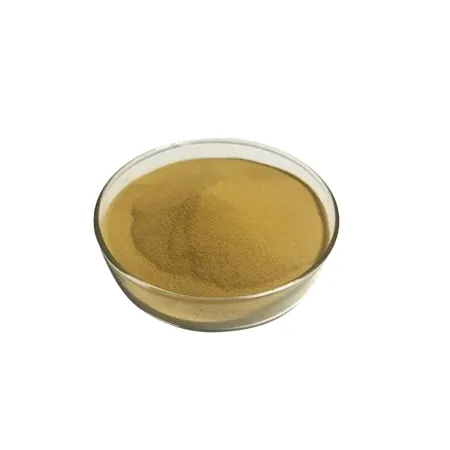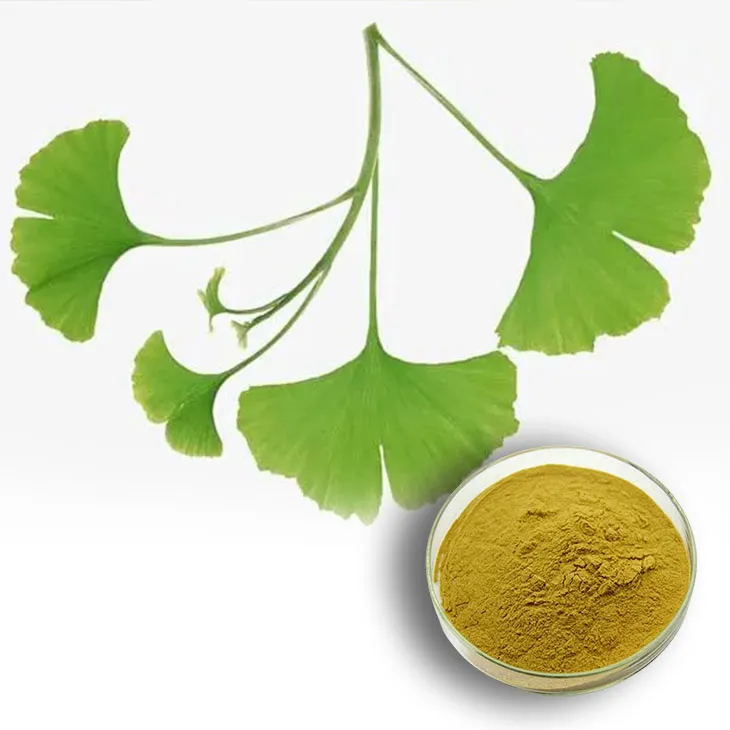- 0086-571-85302990
- sales@greenskybio.com
How to Extract Ginkgo Biloba Extract from Plants?
2024-11-30

1. Introduction
Ginkgo biloba is a unique and ancient plant species known for its potential health benefits. The extract from ginkgo biloba contains various bioactive compounds that are of great interest in the fields of medicine and dietary supplements. These compounds include flavonoids and terpenoids, which are associated with antioxidant, anti - inflammatory, and other beneficial properties. Extracting ginkgo biloba extract from plants is a complex process that requires careful attention to detail and the use of appropriate techniques.

2. Collection of Ginkgo Leaves
The first step in extracting ginkgo biloba extract is the collection of healthy ginkgo leaves.
2.1 Selection of Trees
- Healthy Trees: Only leaves from healthy ginkgo trees should be selected. Trees that show signs of disease, pest infestation, or stress may produce leaves with altered chemical compositions. - Mature Trees: It is preferable to collect leaves from mature trees as they are likely to have a more stable and consistent content of bioactive compounds.
2.2 Time of Collection
- Seasonal Considerations: The best time to collect ginkgo leaves is typically in the fall when the leaves have reached their full maturity. At this time, the concentration of bioactive compounds in the leaves is relatively high. - Weather Conditions: It is advisable to collect leaves on a dry day. Moisture on the leaves can introduce additional challenges during the extraction process, such as promoting the growth of microorganisms.
2.3 Collection Method
- Gentle Harvesting: Leaves should be gently removed from the tree branches to avoid damaging the leaves. Damaged leaves may release enzymes that can start to degrade the bioactive compounds before the extraction process begins. - Cleaning Immediately: Once collected, the leaves should be cleaned immediately to remove any dirt, debris, or insects. This can be done by gently rinsing the leaves with clean water and then allowing them to air - dry or using a low - heat drying method.

3. Initial Extraction Methods
After the collection and preparation of ginkgo leaves, the next step is the initial extraction of the desired compounds. Two common methods for this initial extraction are maceration and percolation.
3.1 Maceration
- Principle: Maceration involves soaking the ginkgo leaves in a suitable solvent to allow the bioactive compounds to dissolve into the solvent. - Solvent Selection: Commonly used solvents for maceration include ethanol, methanol, or a mixture of water and alcohol. Ethanol is often preferred as it is relatively safe, can dissolve a wide range of compounds, and is suitable for use in products that may be consumed as dietary supplements. - Process: 1. The clean and dried ginkgo leaves are placed in a container. 2. The selected solvent is added to the container in a sufficient amount to completely cover the leaves. 3. The container is then sealed and left to stand for a period of time, usually several days to weeks. During this time, the solvent penetrates the leaf tissues and extracts the bioactive compounds. 4. Regular shaking or stirring of the container can enhance the extraction efficiency by ensuring better contact between the solvent and the leaf material.
3.2 Percolation
- Principle: Percolation is a process where the solvent is continuously passed through the ginkgo leaves. This method can be more efficient than maceration as it allows for a continuous supply of fresh solvent to the leaf material, facilitating the extraction of compounds. - Setup: 1. A percolator, which can be a specially designed glass or stainless - steel apparatus, is used. 2. The ginkgo leaves are packed loosely in the percolator. 3. The solvent is then slowly poured into the percolator at the top and allowed to percolate through the leaves and collect at the bottom. 4. The percolated solvent, which now contains the extracted compounds, can be collected and reused several times to increase the overall extraction yield.

4. Refinement of the Extract
Once the initial extraction is complete, the resulting extract needs to be refined to obtain a high - quality ginkgo biloba extract.
4.1 Distillation
- Purpose: Distillation is often used in the refinement process to remove unwanted solvents or impurities from the extract. - Process: 1. The crude extract obtained from maceration or percolation is placed in a distillation apparatus. 2. The apparatus is heated gradually, and the solvent with a lower boiling point will start to vaporize first. 3. The vaporized solvent is then condensed and collected separately, leaving behind a more concentrated extract with a reduced amount of the original solvent. 4. This process can be repeated multiple times to further purify the extract and ensure that the final product meets the required quality standards.
4.2 Filtration
- Removal of Solids: Filtration is another important step in the refinement process. It is used to remove any remaining solid particles such as leaf fragments, dust, or undissolved substances from the extract. - Types of Filtration: - Gravity Filtration: This is a simple method where the extract is poured through a filter paper placed in a funnel. The solid particles are retained on the filter paper while the liquid extract passes through. - Vacuum Filtration: In this method, a vacuum is applied to speed up the filtration process. It is more efficient than gravity filtration, especially when dealing with larger volumes of extract or when the extract has a high viscosity.

5. Characterization and Quality Control
After the refinement of the ginkgo biloba extract, it is essential to characterize the extract and perform quality control measures.
5.1 Chemical Analysis
- Identification of Compounds: Chemical analysis techniques such as high - performance liquid chromatography (HPLC) and gas chromatography - mass spectrometry (GC - MS) are used to identify and quantify the bioactive compounds present in the extract. This helps to ensure that the extract contains the expected levels of flavonoids, terpenoids, and other important components. - Purity Determination: These analytical methods can also be used to determine the purity of the extract by detecting the presence of any contaminants or impurities.
5.2 Biological Activity Testing
- Antioxidant Activity: One of the important properties of ginkgo biloba extract is its antioxidant activity. Tests such as the DPPH (2,2 - diphenyl - 1 - picrylhydrazyl) radical scavenging assay can be used to measure the antioxidant capacity of the extract. - Anti - inflammatory Activity: In - vitro and in - vivo assays can be carried out to evaluate the anti - inflammatory properties of the extract. This is important as the anti - inflammatory activity is one of the main reasons for the potential use of ginkgo biloba extract in treating various diseases.
5.3 Standardization
- Setting Standards: To ensure the consistency and quality of ginkgo biloba extract products, standardization is necessary. Standards can be set for the content of specific bioactive compounds, such as a minimum percentage of flavonoids or terpenoids. - Compliance: Manufacturers need to ensure that their products comply with these standards to provide consumers with reliable and effective ginkgo biloba extract products.
6. Applications of Ginkgo Biloba Extract
The final ginkgo biloba extract, which has been carefully extracted and refined, has a wide range of applications.
6.1 Medical Applications
- Cognitive Function: Ginkgo biloba extract has been studied for its potential to improve cognitive function, particularly in the elderly or those with mild cognitive impairment. It is believed that the antioxidant and anti - inflammatory properties of the extract may help protect the brain cells from damage and improve blood flow to the brain. - Circulatory Disorders: The extract may also be beneficial in treating circulatory disorders such as peripheral artery disease. By improving blood circulation, it can reduce symptoms such as leg pain and improve the overall function of the circulatory system. - Eye Health: Some research has suggested that ginkgo biloba extract may have a positive impact on eye health, particularly in relation to age - related macular degeneration and glaucoma.
6.2 Dietary Supplements
- Antioxidant Source: As a dietary supplement, ginkgo biloba extract provides a source of antioxidants. Antioxidants are important for neutralizing free radicals in the body, which can cause damage to cells and contribute to various diseases and the aging process. - General Health Promotion: Many people take ginkgo biloba extract supplements for general health promotion, hoping to improve their overall well - being, boost their immune system, and maintain healthy body functions.
FAQ:
What are the main methods for the initial extraction of ginkgo biloba extract?
The main methods for the initial extraction of ginkgo biloba extract are maceration or percolation methods.
Why is the refinement process necessary after extracting ginkgo biloba extract?
The refinement process is necessary after extracting ginkgo biloba extract because it helps to remove unwanted solvents or impurities through distillation, etc., which can improve the quality of the final extract.
What are the valuable substances in ginkgo biloba extract?
Ginkgo biloba extract contains valuable substances. These substances are being explored for use in treating various ailments and are also beneficial as a dietary supplement due to its antioxidant properties. However, specific substances may include flavonoids and terpenoids, etc.
How are healthy ginkgo leaves selected for extraction?
When selecting healthy ginkgo leaves for extraction, factors such as the absence of diseases, pests, and proper growth status are considered. Leaves that are fully developed and without obvious damage are usually preferred.
What are the potential applications of ginkgo biloba extract?
The potential applications of ginkgo biloba extract include being used as a dietary supplement. Also, it is being explored for use in treating various ailments because of its antioxidant properties, which may have beneficial effects on aspects such as cognitive function and blood circulation.
Related literature
- The Chemistry and Pharmacology of Ginkgo biloba Extract"
- "Extraction and Analysis of Bioactive Compounds from Ginkgo biloba Leaves"
- "Ginkgo biloba Extract: Production, Quality Control and Therapeutic Applications"
- ▶ Hesperidin
- ▶ citrus bioflavonoids
- ▶ plant extract
- ▶ lycopene
- ▶ Diosmin
- ▶ Grape seed extract
- ▶ Sea buckthorn Juice Powder
- ▶ Beetroot powder
- ▶ Hops Extract
- ▶ Artichoke Extract
- ▶ Reishi mushroom extract
- ▶ Astaxanthin
- ▶ Green Tea Extract
- ▶ Curcumin Extract
- ▶ Horse Chestnut Extract
- ▶ Other Problems
- ▶ Boswellia Serrata Extract
- ▶ Resveratrol Extract
- ▶ Marigold Extract
- ▶ Grape Leaf Extract
- ▶ blog3
- ▶ blog4
-
The best natural sources of Coenzyme Q10.
2024-11-30
-
Chinese sophora flower extract suppliers.
2024-11-30
-
如何用甜叶菊提取物制作粉末
2024-11-30
-
Kidney bean extract of the best quality.
2024-11-30
-
Citrus bioflavonoids
2024-11-30
-
Scutellaria Extract
2024-11-30
-
Medicinal Marshmallow Extract
2024-11-30
-
Panax Ginseng Leaf Extract
2024-11-30
-
Elderberry Extract
2024-11-30
-
Alisma Extract
2024-11-30
-
Marigold Extract
2024-11-30
-
White Peony Extract
2024-11-30
-
Lemon Juice Powder
2024-11-30
-
Lemon Balm Extract
2024-11-30





















